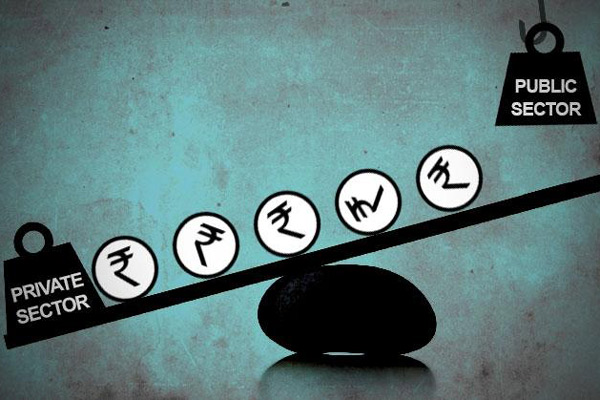Indian Public Sector Banks Privatization
A report has been released in which it is mentioned that government-owned banks in the country, i.e., Public Sector Banks, rather than State Bank of India, are privatizing.
The National Council of Applied Economic Research (NCAER) released a report on privatizing the government bank. National Council of Applied Economic Research (NCAER) is India’s oldest and most authentic economic policy research organization think tank. Their main aim is to research the economic-related field. They collect the data and provide an accurate report. It was launched in 1956 in New Delhi. National Council of Applied Economic Research (NCAER) is one of the best think tanks in the world that did a lot of deep analysis and outreached the policies. This organisation do a deep analysis of every economic-related field.
Two economists, Arvind Panagariya, the vice chairman of Niti Aayog, and their president Poonam Gupta launched this report. In this report, it is mentioned that Central banks should privatize all the Public Sector Banks (PSBs), except the SBI (State Bank of India), because, according to the report, private sector banks have popped up as a good alternative in recent times. The private sector is doing an appreciating work, and immense growth has been seen in this sector.
Here the report says that there is not that much need for Public Sector Banks because of the issues faced. The Reserve Bank of India faces the problem of maintaining and managing. So it’s better to privatize the Public Sector Banks.
Public sector banks are lacking in the race compared to Private Sector Banks. This can be clearly highlighted during the last decade. The return on assets, equity, and private sector counterparts are meagre.
Return on Asset means the return that the firm gets on its assets. For a bank, the assets can be the loans it gives to the general public because on that loan, the bank will get the interests which are the returns for the bank. Here, in the public sector, most of the loans become Non-Performing Assets (NPA) which is a serious issue for banks especially faced by the public sector.
Public Sector Banks had lost ground to private banks in deposits and loans. Since 2014-15 the role and contribution of private sector banks have been comparatively high in the growth of the banking sector, while in the case of government banks, only the contribution of the SBI (State Bank of India) is seen. Underperforming public sector banks are continuously on a hike.

A lot of measures were taken by the government to improve the conditions of PSBs, but still, the underperformance of PSBs continues. Measures include :
- Recapitalization
- Bank Board Bureau
- Prompt corrective action plans
- Consolidation through mergers.
Even after taking these appreciable measures, the performance of Public Sector Banks stuck to be slow.
If we compare the Non-Performing Assets (NPA) with the Private banks, then it continues to be at an elevated level. A lot of NPA can be seen in PSBs even after infusing 65.67 billion dollars by the government. Between 2010-2011 and 2020-2021, the government has given 65 billion dollars to all the Public Sector Banks, but despite that, NPA seems continuously rising.
Even after investing huge capital in PSBs, the market valuation of public sector banks is trifling. Market valuation refers to the worth of a firm. The amount of recapitalization by the government is worth 43.04 billion dollars, but the market valuation is just 30.78 billion dollars. This shows that the market valuation was even lower than the recapitalization value.
Even if the government invests more capital in the government-owned banks, initially, looking at the past performance, it will not be worthy; government banks will not contribute to economic growth. So it is better to privatize the PSBs.
Which bank to privatize first?
The report notified that banks should be privatized, but the big question is which bank should be the first to privatize. So, it is mentioned in the report that the two banks whose situation is better as compared with the other public sector banks on having the highest return on assets, lowest NPA (Non-Performing Assets) in the last five years, and low shared government ownership compared to other public sector banks will be easier for privatizing first.
If the bank whose performance was not good will be privatized first, then it will lose morale, and the rest public sector banks will not get privatized. So, the bank having good performance will be privatized first to set an example for the rest of the banks.
The Niti Ayog report suggests that the Central Bank of India and Indian Ocean overseas Bank should be privatized first. But according to the National Council of Applied Economic Research (NCAER) report, the Indian Bank and Bank of Baroda should be privatized first.
Between these two, the bank of Baroda would be easier to privatize since the government will need to divert by only 15 percent to lower its stake below 51%.
Strategy: Suggesting the sale strategy, the reporters have stated that if the government decides to keep its stake near the 50%, on every month’s 15th date, it can sell its shareholding in the open market on the 15 per month to lower its stake to 50%.
Edited by Prakriti Arora



